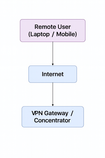Managing Bandwidth and Oversubscription in Enterprise Networks
- The Itvue Team
- Aug 19
- 2 min read
Author Ermias Teffera
At ITVue Networks, one of the most common challenges we see in enterprise networks is oversubscription—when the available bandwidth on upstream links is less than the total potential demand from downstream devices. Properly managing bandwidth and oversubscription is critical to ensure high network performance, avoid congestion, and deliver a consistent user experience. In this blog, we’ll explore strategies such as EtherChannel, Equal-Cost Multi-Path (ECMP) routing, and best practices for bandwidth management.
Understanding Oversubscription
Oversubscription occurs when the aggregated potential traffic exceeds the capacity of the uplink. For example:
24 access switches, each with 1 Gbps links, uplinked to a distribution switch with a 10 Gbps uplink → 24:10 ratio, high oversubscription.
Distribution to core with multiple 10 Gbps links but high traffic demand → risk of congestion if oversubscription is too high.
Oversubscription is acceptable in many cases because not all devices are sending maximum traffic simultaneously. However, careful design is required.
Strategies to Manage Bandwidth and Oversubscription
Strategies to Manage Bandwidth and Oversubscription
1. EtherChannel (Link Aggregation)
EtherChannel allows multiple physical links to be combined into a single logical link, increasing total bandwidth and providing redundancy.
Diagram:

Configuration Example (Cisco):

Benefits:
Aggregate bandwidth (e.g., 4x1G = 4Gbps)
Redundancy if a link fails
Simplified management
2. ECMP (Equal-Cost Multi-Path)
ECMP routing allows multiple paths to a destination with the same cost to be used simultaneously, balancing traffic across multiple uplinks.
Diagram:

ECMP is used in Layer 3 routed designs (core and distribution).
Works best when traffic is hashable, e.g., based on source/destination IP.
Provides bandwidth scaling and redundancy without single-point bottlenecks.
3. Adjusting Oversubscription Ratios
Cisco recommends structured ratios:
Access to Distribution: up to 20:1
Distribution to Core: up to 8:1
By adjusting the number of uplinks and link speeds, oversubscription can be reduced:
Use multiple uplinks per access switch.
Increase uplink speed (1G → 10G).
Deploy ECMP across distribution uplinks to the core.
4. Combining Techniques
For maximum efficiency, networks often use EtherChannel for physical aggregation and ECMP for routing across multiple paths:
Access switches → EtherChannel uplinks → Distribution switches
Distribution switches → ECMP paths → Core switches
This combination balances Layer 2 aggregation with Layer 3 path diversity.
Best Practices for Bandwidth Management
Monitor traffic patterns to adjust oversubscription dynamically.
Combine EtherChannel and ECMP for both redundancy and load balancing.
Avoid high oversubscription ratios in latency-sensitive environments.
Use QoS to prioritize critical applications when oversubscription occurs.
Regularly review core and distribution link utilization.
Real-World Example
In a financial institution:
Each office floor has 24 access switches, each 1 Gbps → 4x1G EtherChannel uplinks to distribution switches.
Distribution switches have 2x10G ECMP uplinks to core.
Result: effective aggregation of bandwidth while maintaining redundancy and reducing oversubscription bottlenecks.
Conclusion
Managing bandwidth and oversubscription requires a strategic combination of link aggregation, routing optimization, and careful ratio planning. Using EtherChannel for physical aggregation and ECMP for routing ensures traffic flows efficiently across the network while providing resilience. At ITVue Networks, these strategies are applied to design high-performance, scalable networks that meet enterprise demands.










Comments